Time for the big one, Samarqand. Ever since we've known of the Silk Road, this city has been in our consciousness. The Tashkent bound bus from Bukhara dropped us off in the outskirts of the city after crawling its way through 300km of reasonably paved road. We had already spent in excess of 7 hours (including a 90 minute wait for the bus to fill up) getting here, making us wonder if we were quite ready for Samarqand. Samarqand!
In the back of our minds we also knew that we had almost completed yet another circle with us being barely 60 km from Penjikent (now fast receding in our memories) where we had been just a few weeks ago
. Due to the border closure only crows can fly between the two cities. The driver of city bus No. 99 who indicated that the Registan was just a chut chut (little, in Russian) walk from where he would drop us, also served as impromptu guide as he pointed out the turquoise (what else?) domes of Shah-i-Zinda Mausoleum and the Bibi Khanum Mosque and Mausoluem. Ready or not, Samarqand was here. Samarqand!
We got off at Amir Temir square which was still a good 10 minute walk from Registan (and our B&B which was just behind it!). It was early in the afternoon (3:30 pm) and the Registan shone in the bright sunshine as we approached it after stopping for photographs with the statue of Timur. The distant dome of Guri Amir Mausoleum would have to wait for another day. The three monuments that comprise the Registan - Ulughbek Medressa, Tilla-Kari Medressa and the Sherdor Medressa - loomed large and majestic, forcing us to linger on for a while before proceeding to our B&B as the weight of the packs on our backs urged us to do
. The tilework looked quite different from anything we had seen in Khiva or Bukhara. Overzealous guards zoomed in and demanded that we buy tickets (valid only for the day) even to enter the outside yard lying between the three monuments. The Registan will have to wait till tomorrow. What about the rest of Samarqand? Samarqand!
Making quick work of dumping our bags at our B&B (where we ended up meeting familiar faces including those who were following the same route as us), we headed toward the Bibi Khanum complex just a few minutes walk on the squeaky clean pedestrian walkway lined with modern shops that no one seemed to be interested in. Legend has it that Timur's favorite wife had the mosque built as a surprise for him during one of his frequent absences fighting a war elsewhere. It was finished just before his death. It crumbled over the centuries before eventually collapsing in an earthquake in 1897. It has been restored since with mixed results. The massive entrance to the mosque dwarfs everything else around it. The twin fluted domes and the familiar inner structure with a massive turquoise dome built flat against it belied the interior of the structures which were in ruins
. On closer inspection, one could see that the turquiose tiles on the large dome were falling apart in several places.
The Registan looked different in the morning light with the sunlight favoring the Ulughbek Medressa unlike the previous afternoon when the Sherdor Medressa was lit by the afternoon sun. The medressas are no longer functioning and are used for various purposes. The Ulughbek Medressa has an interesting museum on Ulugh Begh and we got the education we were after and learnt a lot about the man and his stature in the world of astronomy. The inside walls of the medressa are beautifully decorated with verses from the Quran, and judging from Ulugh Beg's choice of verse, he seems to have been a man with progressive views.
The Tilla Qori Medressa's interior rooms (for students and professors in earlier times) are now occupied by artists selling their work - metal jewellery, carpets, miniature paintings etc. The Sherdor Medressa's facade includes a pair of lions (violating the Islamic edict of not depicting living beings in religious places) that actually look like tigers
. This image is Samarqand's icon and can be seen elsewhere in the city. The interior of this medressa is currently used to entertain tourists with musical performances, staged traditional weddings etc.
The Guri Amir Mausoleum contains the crypts of Timur, several of his descendants and his revered teachers. All the crypts are laid out in a central hall with Timur's dark stone standing out amongst the white stones for the others, which include smaller stones for those that died as children. We learnt that the crypts were opened to confirm that Timur was lame in an arm and a leg and that Ulugh Begh was beheaded.
We also came across this interesting aspect of Timur's talent for warfare: "Timur's military talents were unique. He planned all his campaigns years in advance, even planting barley for horse feed two-years ahead of his campaigns. He used propaganda, in what is now called information warfare, as part of his tactics. His campaigns were preceded by the deployment of spies whose tasks included collecting information and spreading horrifying reports about the cruelty, size, and might of Timur’s armies
. Such psychological warfare eventually weakened the morale of threatened populations and caused panic in the regions that he intended to invade".
The impressive Shah-i-Zinda complex is an avenue of several mausoleums (for relatives of Timur and Ulugh Begh) that are situated in close proximity with several adjacent to each other and facing another row of mausoleums separated by a few feet. This makes it extremely difficult to get a photographic account of the site as one is denied distance and sunlight in that narrow path. Some of the mausoleums have fascinating and unique interior decorations. The name Shah-i-Zinda (Tomb of the Living King) refers to the innermost shrine for Qusam ibn-Abbas, a cousin of the Prophet. The complex is adjacent to a large cemetery through which we walked back to the street.
Other highlights of our stay in Samarqand included a visit to the Ulugh Begh's observatory that contains a massive (36m radius) Fakhri sextant, the instrument with which he observed star positions
. We were quite impressed by this man's scientific achievements despite his regular job as ruler of the land. Of course, the Republic of Uzbekistan spares no efforts in touting his achievements in the small museum adjacent to the observatory.
Dinner time at the B&B was like being with family with so many familiar faces who were traversing the 3 sites (Khiva, Bukhara and Samarqand) in both directions. Despite the presence of several other places to stay, the power of word-of-mouth holds sway and we all inevitably gravitated towards the same places.
While the three Silk Road sites - Khiva, Bukhara and Samarqand - do not really compete for tourist attention as most visit all three, it is a popular pastime for several to rank them. For us, it was Bukhara that impressed us most as the most authentic looking of the three. While all three have been touched up significantly, Samarqand's Registan looked a bit too glossy to be real, almost as if it was its own Las Vegas incarnation. We cannot fault the renovators for trying (and no doubt, succeeding) to make it look great, however. But the modern city of Samarqand spoils the reverie by intruding on us with busy traffic, bus stops, mobile phones, jeans and high heels. Buildings can be renovated, but can anyone bring back the turbans and the beards, chaotic bazaars, bellicose emirs mounted on rampant horses, people being dropped from high walls in sacks filled with wild cats? That's what we came here to see! Samarqand!
Google Maps Link
Timur Land
Tuesday, October 09, 2012
 Samarkand, Uzbekistan
Samarkand, Uzbekistan
Other Entries
-
60Fan Mountains and Marguzor Lakes
Sep 0732 days prior Marguzor, Tajikistanphoto_camera16videocam 0comment 2
Marguzor, Tajikistanphoto_camera16videocam 0comment 2 -
61From Remote Mountain Village to Capital City
Sep 0831 days prior Dushanbe, Tajikistanphoto_camera9videocam 0comment 2
Dushanbe, Tajikistanphoto_camera9videocam 0comment 2 -
62Independence Day at the Capital
Sep 0930 days prior Dushanbe, Tajikistanphoto_camera10videocam 0comment 2
Dushanbe, Tajikistanphoto_camera10videocam 0comment 2 -
63Crossing a Remote Border into Kyrgyzstan
Sep 1128 days prior Jirgatol, Tajikistanphoto_camera18videocam 0comment 2
Jirgatol, Tajikistanphoto_camera18videocam 0comment 2 -
64Onward from the Kyrgyz border
Sep 1227 days prior Osh, Kyrgyzstanphoto_camera22videocam 0comment 2
Osh, Kyrgyzstanphoto_camera22videocam 0comment 2 -
65Kyrgyzstan's Second Largest City
Sep 1326 days prior Osh, Kyrgyzstanphoto_camera9videocam 0comment 2
Osh, Kyrgyzstanphoto_camera9videocam 0comment 2 -
66How could you not go to a place called Arslanbob ?
Sep 1524 days prior Arslanbob, Kyrgyzstanphoto_camera15videocam 0comment 1
Arslanbob, Kyrgyzstanphoto_camera15videocam 0comment 1 -
67The Long Road to Bishkek
Sep 1821 days prior Bishkek, Kyrgyzstanphoto_camera14videocam 0comment 3
Bishkek, Kyrgyzstanphoto_camera14videocam 0comment 3 -
68Seven Bulls and a Broken Heart
Sep 2019 days prior Karakol, Kyrgyzstanphoto_camera13videocam 0comment 2
Karakol, Kyrgyzstanphoto_camera13videocam 0comment 2 -
69At Song Kul Lake - An Unforgettable Experience
Sep 2217 days prior Kochkor, Kyrgyzstanphoto_camera23videocam 0comment 0
Kochkor, Kyrgyzstanphoto_camera23videocam 0comment 0 -
70Back to Bishkek
Sep 2316 days prior Bishkek, Kyrgyzstanphoto_camera0videocam 0comment 5
Bishkek, Kyrgyzstanphoto_camera0videocam 0comment 5 -
71Almaty
Sep 2613 days prior Almaty, Kazakhstanphoto_camera16videocam 0comment 1
Almaty, Kazakhstanphoto_camera16videocam 0comment 1 -
72Day Trip To Turkistan
Sep 2811 days prior Shymkent, Kazakhstanphoto_camera8videocam 0comment 1
Shymkent, Kazakhstanphoto_camera8videocam 0comment 1 -
73The Border Crossing You Dont Want To Repeat
Sep 2910 days prior Tashkent, Uzbekistanphoto_camera5videocam 0comment 4
Tashkent, Uzbekistanphoto_camera5videocam 0comment 4 -
74Some History Lessons
Oct 027 days prior Tashkent, Uzbekistanphoto_camera5videocam 0comment 2
Tashkent, Uzbekistanphoto_camera5videocam 0comment 2 -
75From Slave Market to Museum
Oct 045 days prior Khiva, Uzbekistanphoto_camera14videocam 0comment 1
Khiva, Uzbekistanphoto_camera14videocam 0comment 1 -
76How Much Renovation is Just Right?
Oct 063 days prior Bukhara, Uzbekistanphoto_camera32videocam 0comment 3
Bukhara, Uzbekistanphoto_camera32videocam 0comment 3 -
77Timur Land
Oct 09 Samarkand, Uzbekistanphoto_camera28videocam 0comment 1
Samarkand, Uzbekistanphoto_camera28videocam 0comment 1 -
78Goodbye To The 'Stans
Oct 101 day later Tashkent, Uzbekistanphoto_camera6videocam 0comment 2
Tashkent, Uzbekistanphoto_camera6videocam 0comment 2 -
79Still In Asia Or Is This Europe?
Oct 134 days later Baku, Azerbaijanphoto_camera28videocam 0comment 1
Baku, Azerbaijanphoto_camera28videocam 0comment 1 -
80Foothills Of The Caucasus Mountains
Oct 145 days later Lahic, Azerbaijanphoto_camera16videocam 0comment 2
Lahic, Azerbaijanphoto_camera16videocam 0comment 2 -
81Vikings Originally Came From Azerbaijan?
Oct 167 days later Sheki, Azerbaijanphoto_camera13videocam 0comment 1
Sheki, Azerbaijanphoto_camera13videocam 0comment 1 -
82An Azerbaijani Family
Oct 167 days later Sheki, Azerbaijanphoto_camera0videocam 0comment 3
Sheki, Azerbaijanphoto_camera0videocam 0comment 3 -
83A Change of Faith
Oct 1910 days later Tbilisi, Georgiaphoto_camera16videocam 0comment 3
Tbilisi, Georgiaphoto_camera16videocam 0comment 3 -
84Dzhugashvili and Svetitskhoveli
Oct 2011 days later Gori, Georgiaphoto_camera17videocam 0comment 2
Gori, Georgiaphoto_camera17videocam 0comment 2 -
85A Border Runs Through It
Oct 2112 days later Davit Gareja, Georgiaphoto_camera15videocam 0comment 2
Davit Gareja, Georgiaphoto_camera15videocam 0comment 2 -
86In the Greater Caucasus Mountains
Oct 2314 days later Qazbegi, Georgiaphoto_camera15videocam 0comment 1
Qazbegi, Georgiaphoto_camera15videocam 0comment 1 -
87The Pink Capital of Armenia
Oct 2617 days later Yerevan, Armeniaphoto_camera22videocam 0comment 2
Yerevan, Armeniaphoto_camera22videocam 0comment 2 -
88Colors Of The North - Dilijan and Lake Sevan
Oct 2718 days later Dilijan, Armeniaphoto_camera14videocam 0comment 2
Dilijan, Armeniaphoto_camera14videocam 0comment 2 -
89The Armenian Apostolic Church
Oct 2819 days later Echmiadzin, Armeniaphoto_camera13videocam 0comment 0
Echmiadzin, Armeniaphoto_camera13videocam 0comment 0 -
90Two Monasteries And A Winery
Oct 2920 days later Areni, Armeniaphoto_camera9videocam 0comment 0
Areni, Armeniaphoto_camera9videocam 0comment 0 -
91Tatev (Give Me Wings)
Oct 3021 days later Goris, Armeniaphoto_camera10videocam 0comment 0
Goris, Armeniaphoto_camera10videocam 0comment 0 -
92The Nagarno Karabakh Republic
Oct 3122 days later Stepanakert, Azerbaijanphoto_camera18videocam 0comment 2
Stepanakert, Azerbaijanphoto_camera18videocam 0comment 2 -
93Homer in Turkish
Nov 0123 days later Tbilisi, Georgiaphoto_camera1videocam 0comment 1
Tbilisi, Georgiaphoto_camera1videocam 0comment 1 -
94From Caspian Sea To Black Sea
Nov 0325 days later Batumi, Georgiaphoto_camera11videocam 0comment 1
Batumi, Georgiaphoto_camera11videocam 0comment 1 -
95A Short Distance, But A World Apart
Nov 0426 days later Trabzon, Turkeyphoto_camera16videocam 0comment 1
Trabzon, Turkeyphoto_camera16videocam 0comment 1
Comments
2025-05-22
Comment code: Ask author if the code is blank

 Samarkand, Uzbekistan
Samarkand, Uzbekistan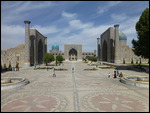

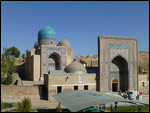
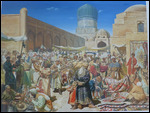

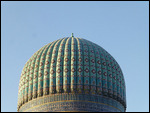








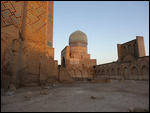

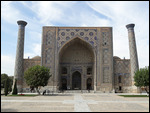
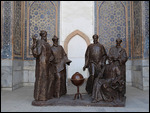
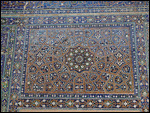
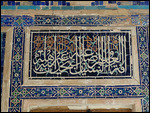

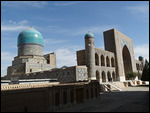
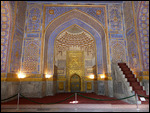
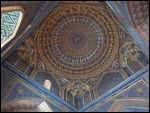
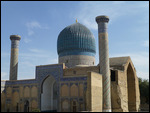
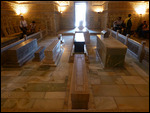
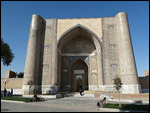
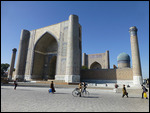
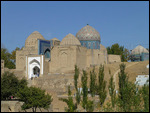
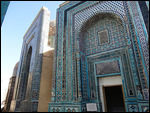

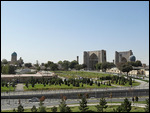
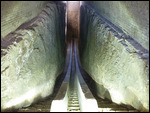
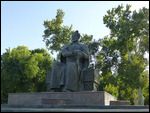
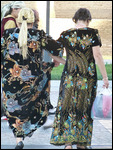

Ramesh
2012-10-20
Waaaaaaahhhhhhhh. Speechless at both your post and Samarqand !